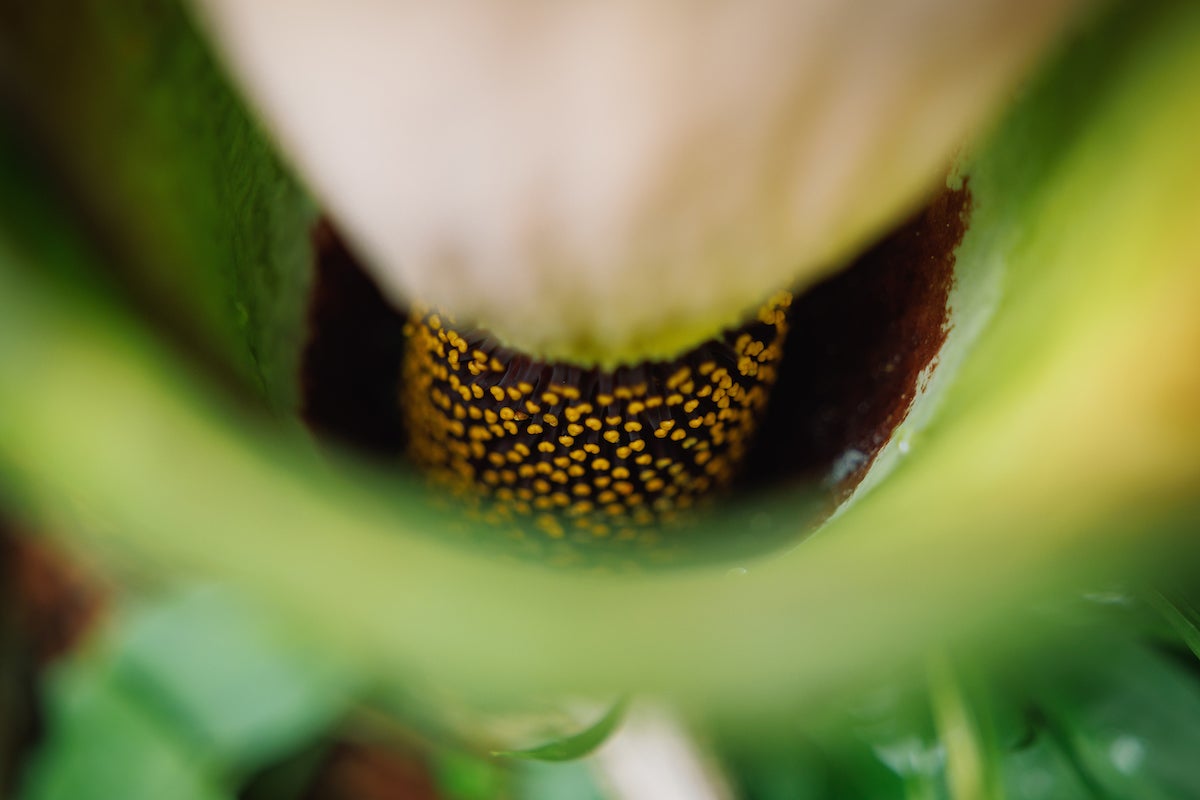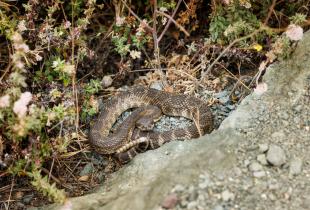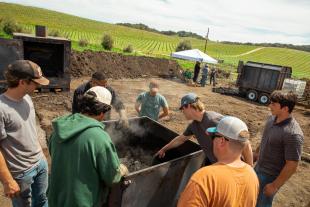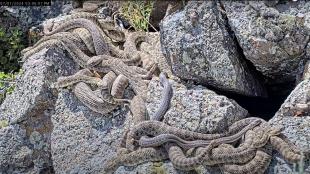Small Stature, Strong Smell: Another Corpse Flower Blooms on Campus


If you walked into the lowland rainforest section of the Cal Poly Plant Conservatory on Monday, your nostrils were greeted with a rare treat: the smell of roadkill and death, the trademark stench of the corpse flower.
“It hits the back of your throat. There’s a depth to it that’s fascinating,” said conservatory curator Gage Willey, as he grinned and pointed out the fading bloom on Tuesday.
The flower that bloomed in the conservatory this week wasn’t the massive titan arum — which bloomed at Cal Poly for three summers in a row — but a smaller cousin, the Amorphophallus hewitii.
“There are different species of corpse flower that are all referred to by that name,” Willey said, likening it to referring to dogs as pooches or pups instead of by their specific breeds. “They’re all stinky plants.”
The Amorphophallus hewitii plant is fairly rare, Willey said, and is “a little less showy than its larger cousin.”
“This is the first time we’ve ever bloomed this species,” Willey said.
In the summer of 2020, 3,000 people came out to see and smell the six-year-old Musty. The bloom streak continued the following summer with the 18-year-old Bertha. And finally, in July 2022, the seven-year-old Mustito — a sibling of Musty — put on its own aromatic show.
But despite a little less pomp surrounding this flower, Willey said the conservatory saw steady foot traffic on Monday and Tuesday from people who wanted to see the plant and experience its trademark smell.
Even without a rare bloom, Willey encourages the campus community to come into the conservatory and explore the plants. In addition to the corpse flower bloom, Willey pointed out other interesting developments in the greenhouse, like bright-pink tropical blueberries and a vanilla plant in bloom — the first time that’s happened at Cal Poly.
“Just enjoy the space and be curious.”
Want more Learn by Doing stories in your life? Sign up for our monthly newsletter, the Cal Poly News Recap!




